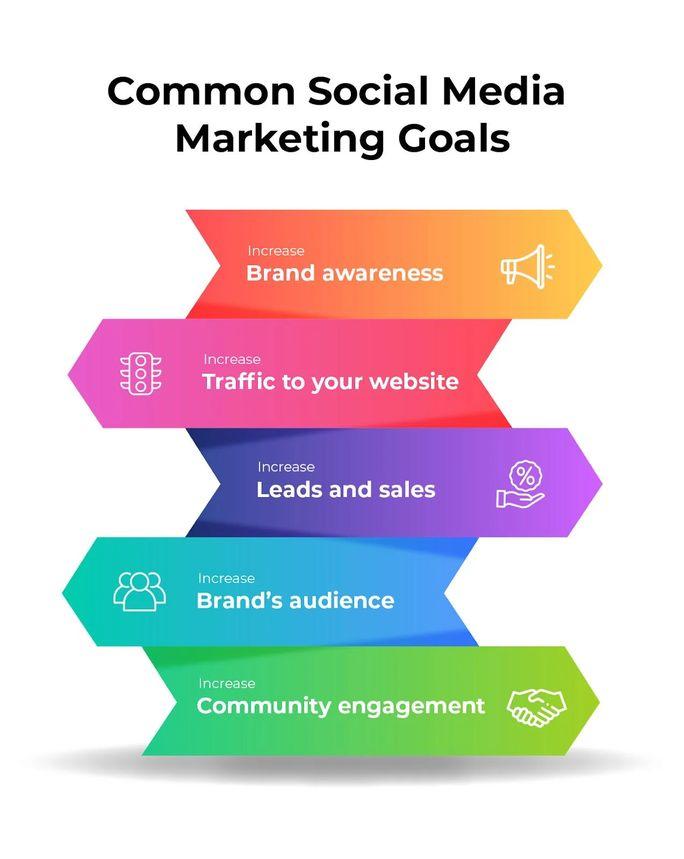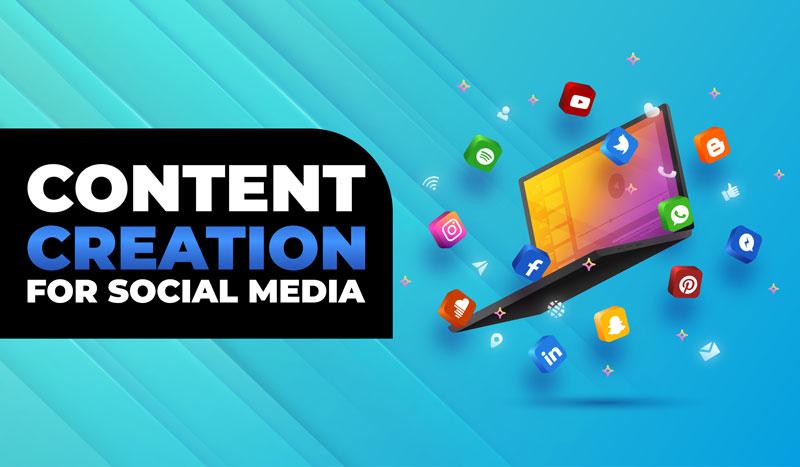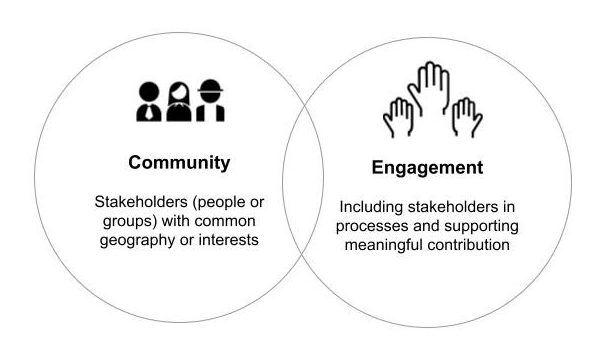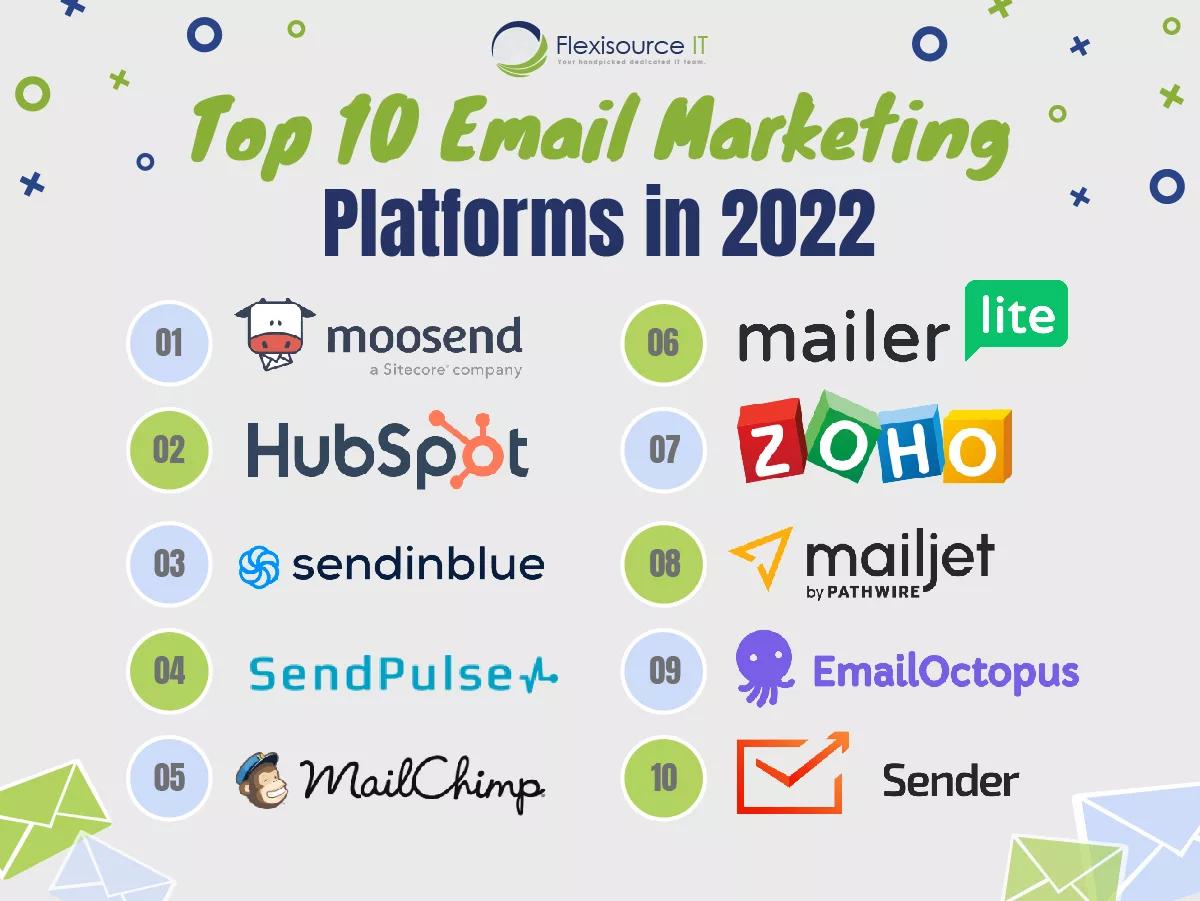What is Social Media Management? Your Ultimate Guide
Welcome to the digital age, where social media isn’t just a platform for sharing cat videos or vacation photos—it’s a powerful tool that can elevate brands, connect communities, and drive business growth. If you’ve ever wondered how some companies effortlessly engage their audience while others seem to struggle for attention, the secret often lies in effective social media management.But what exactly does that entail?
In this ultimate guide, we’ll break down the essentials of social media management, exploring everything from content creation to analytics. Whether you’re a business owner looking to amplify your online presence, a marketer aiming to refine your skills, or simply someone curious about the intricacies of social media, you’re in the right place.Get ready to dive into strategies, tips, and insights that will not only enhance your understanding but also empower you to harness the full potential of social media. Let’s get started on this journey together!
Understanding Social Media Management and Its Importance
Social media management is a multifaceted discipline that goes beyond merely posting updates on various platforms. It encompasses the strategic planning, execution, and monitoring of all social media activities to achieve specific business goals. The significance of effective social media management cannot be overstated, as it plays a pivotal role in enhancing brand visibility, engaging customers, and driving conversions.
At its core, social media management involves several key components:
- Content Creation: Crafting compelling and relevant content tailored to your target audience.
- Scheduling and Posting: Timing your posts for optimal engagement and reach.
- Community Engagement: Interacting with followers, responding to comments, and building relationships.
- Analytics and Reporting: Tracking performance metrics to refine strategies and improve results.
One of the primary reasons businesses prioritize social media management is its ability to foster meaningful connections with consumers. By engaging with your audience in real-time, you can build trust and loyalty, which are crucial for long-term success. Moreover, well-managed social media accounts can transform a brand into a thought leader in its industry, positioning it as a go-to source for facts and solutions.
Additionally, effective social media management allows brands to monitor trends and gauge customer sentiment. by analyzing interactions and feedback, businesses can adapt their strategies to align with audience preferences. This adaptability not only enhances customer satisfaction but also provides invaluable insights for product growth and marketing campaigns.
lastly, consider the competitive edge that proficient social media management can provide. In an increasingly crowded marketplace,standing out is essential. A cohesive and engaging social media strategy can differentiate your brand, attract new customers, and retain existing ones. Investing in this area of marketing is not just an option; it’s a necessity for thriving in today’s digital landscape.

Key Components of Effective Social media Management
Effective social media management hinges on several key components that together create a cohesive and engaging online presence. Understanding and implementing these elements can significantly enhance your brand’s visibility and foster community interaction.
- Content Strategy: A well-defined content strategy allows you to communicate your brand message clearly. Plan your posts to include a mix of promotional, educational, and entertaining content that resonates with your audience.
- Consistency: Posting regularly helps maintain audience engagement and builds trust. Establish a content calendar to ensure that you are consistent with your posts across all platforms.
- Audience Engagement: Actively interacting with your followers is crucial. Respond to comments, ask questions, and encourage discussions to foster a community feel.
- Analytics and Insights: Utilize social media analytics tools to track the performance of your posts. Understanding what works and what doesn’t allows you to refine your strategy for better results.
- Visual Appeal: High-quality visuals are key to grabbing attention. Invest in professional images, infographics, and videos that represent your brand’s personality.
Additionally, the use of various tools can streamline your social media management efforts. Here’s a simple table showcasing some popular tools along with their primary functions:
| Tool | Function |
|---|---|
| Hootsuite | Scheduling and monitoring posts across multiple platforms. |
| Canva | Creating stunning graphics and visuals. |
| Buffer | Analytics and performance tracking for posts. |
| Sprout Social | Engagement tools for managing customer interactions. |
staying informed about the latest social media trends is essential. The landscape of social media is ever-evolving, and what works today might not work tomorrow. Therefore, prioritize continuous learning and adaptation to keep your strategy fresh and relevant.
Choosing the Right Platforms for Your Brand
is a critical step in your social media management strategy. Not every platform is suitable for every business, and understanding where your audience spends their time can make all the difference in your engagement and overall success. Here’s how to pinpoint the right fit:
Identify Your Target audience: The first step is to have a clear understanding of who your target audience is. Think about:
- Demographics: Age, gender, income level.
- Interests: What do they care about?
- Online Behavior: Which platforms do they use most frequently?
Once you know your audience, you can tailor your content and choose the platforms that align with their preferences. For example, if you’re targeting a younger demographic, platforms like TikTok and Instagram might be more effective than LinkedIn.
Assess Platform Features: Different platforms offer various features that can enhance your brand’s presence. Consider the following:
- Visual content: instagram and Pinterest are great for brands that rely heavily on imagery.
- Long-form Content: LinkedIn and Medium cater to businesses that want to share in-depth articles and thought leadership.
- Engagement Tools: Twitter and Facebook offer robust tools for engaging with your audience directly.
By assessing the features of each platform, you can select those that will best showcase your brand and engage your audience effectively.
Evaluate Your Resources: Managing multiple social media accounts can be time-consuming, so it’s significant to evaluate your resources. Ask yourself:
- How much time can you dedicate to each platform?
- Do you have access to the necessary tools and talent for content creation?
- What is your budget for advertising and promotions on these platforms?
Choosing fewer platforms and focusing on them enables you to create better quality content and foster genuine relationships with your audience, rather than spreading yourself too thin.
Monitor and Adjust: After you’ve selected your platforms and started posting, it’s crucial to track your performance. Use analytics tools to monitor:
- Engagement rates
- Follower growth
- Content performance
Regularly analyzing this data will help you make informed adjustments to your strategy,ensuring that you stay aligned with your audience and continue to refine your approach over time.

Creating a Winning Social Media Strategy
Crafting a triumphant social media strategy requires a blend of creativity, analytics, and audience understanding.the first step is to define clear goals. What do you want to achieve? Common objectives include:
- Increasing brand awareness
- Engaging with your audience
- Driving traffic to your website
- Boosting sales or conversions
Once your goals are set, it’s essential to know your audience. Conduct thorough research to identify their demographics, interests, and online behavior. Tools like surveys, social media insights, and analytics can provide invaluable data. By understanding who your audience is, you can tailor your content to resonate with them, making it more likely to spark engagement.
Next, focus on choosing the right platforms. Not every social media platform is suitable for every business. As a notable example, if your target audience skews younger, platforms like TikTok or Instagram might be more effective. Conversely, LinkedIn is ideal for B2B companies looking to connect with industry professionals. Here’s a quick comparison:
| Platform | Best For |
|---|---|
| Widespread engagement | |
| Visual storytelling | |
| Real-time interaction | |
| Professional networking | |
| TikTok | Creative short videos |
Content creation is where the magic happens. Consistently produce and share high-quality content that aligns with your brand and interests your audience. This might include blog posts, videos, infographics, or user-generated content. Remember to maintain a cohesive brand voice across all platforms to enhance recognition and trust.
Lastly, don’t underestimate the power of analytics and adjustments. Regularly review your performance metrics to see what’s working and what isn’t. Use this data to refine your strategy, try new approaches, and stay ahead of trends. Social media is ever-evolving, and flexibility is key to staying relevant and successful.

Content Creation Tips for Engaging Your Audience
Creating content that resonates with your audience is essential in the crowded digital landscape. To achieve this, focus on understanding your audience’s preferences and interests. Conducting surveys or utilizing analytics tools can provide valuable insights into what topics and formats engage your followers the most.
Once you have a grasp on your audience, consider diversifying your content formats. Incorporate a mix of text, images, videos, and infographics to keep your feeds fresh and dynamic. This variety not only caters to different learning styles but also helps to maintain interest.Here are some effective formats to try:
- Interactive polls and quizzes – Encourage participation and feedback.
- How-to guides and tutorials – Provide value and demonstrate expertise.
- Behind-the-scenes content – Offer a glimpse into your brand’s personality.
- User-generated content – Showcase your community and build trust.
Another way to engage your audience is through storytelling. People connect with stories on an emotional level,so weave narratives into your posts. Share challenges, successes, and insights that reflect your brand’s journey. This approach not only humanizes your brand but also encourages followers to share their own stories, creating a community around your content.
Consistency is key in maintaining audience engagement. Develop a content calendar to plan and schedule your posts strategically.This not only helps in staying organized, but it also ensures that you are consistently delivering fresh content to your audience. Consider the following tips when planning your calendar:
| Day | Content Type | Platform |
|---|---|---|
| monday | Blog Post | Website |
| Wednesday | Video Tutorial | YouTube |
| Friday | Social Media poll |
lastly,always invite engagement by posing questions,encouraging comments,and responding to your audience. Make it a two-way conversation rather than a monologue. By fostering a sense of community and belonging, you can turn casual followers into loyal advocates for your brand.

Measuring Success: Key Metrics to Track
When it comes to social media management, understanding the metrics that reflect your performance is essential for steering your strategy in the right direction. By regularly tracking specific key performance indicators (KPIs), you can gauge the effectiveness of your campaigns and make informed decisions that drive growth.
Here are some critical metrics to focus on:
- Engagement Rate: This metric indicates how well your audience interacts with your content. A high engagement rate suggests your posts resonate with your audience, fostering loyalty and community.
- Follower Growth Rate: Rather than simply counting followers, track the rate at which your audience grows over time. This gives insight into the overall health of your social media presence.
- Reach and Impressions: Reach tells you how many unique users saw your content, while impressions reveal how frequently enough it was displayed. Together,these metrics help assess the visibility of your brand.
- Click-Through Rate (CTR): This measures the percentage of users who clicked on a link in your post. A high CTR signifies that your content is compelling and encourages action.
- Conversion Rate: Ultimately, the goal is to convert users into customers. Monitoring your conversion rates will help you understand how well your social media efforts translate into sales or leads.
To visualize these metrics,consider compiling them into a table that provides a snapshot of your progress over time. Here’s a simple example:
| Month | Engagement Rate (%) | Follower growth Rate (%) | CTR (%) | Conversion Rate (%) |
|---|---|---|---|---|
| January | 5.2 | 10 | 3.5 | 2.1 |
| February | 6.0 | 8 | 4.0 | 2.5 |
| March | 7.3 | 12 | 4.5 | 3.0 |
Tracking these metrics not only helps you understand your current performance but also empowers you to set future goals.By analyzing trends and patterns, you can refine your strategy to enhance engagement, grow your audience, and ultimately achieve your business objectives.
Remember, the key to effective social media management is not just collecting data but using it strategically. Embrace these metrics, adapt to what they tell you, and watch your social media presence thrive.
Tools and Software to Simplify Your Social Media Management
Managing multiple social media accounts can feel overwhelming,but the right tools and software can simplify the process and help you achieve your goals efficiently. Here are some essential tools that can elevate your social media management game:
- Hootsuite: A versatile platform that allows you to schedule posts across various networks, track performance, and engage with your audience all from one dashboard.
- Buffer: Ideal for scheduling posts, Buffer also provides analytics to help you understand what content resonates best with your audience.
- Canva: Craft stunning visuals effortlessly with this user-friendly graphic design tool. Perfect for creating eye-catching social media graphics that stand out.
- Sprout Social: An all-in-one social media management solution that offers robust analytics, engagement tools, and scheduling options tailored for businesses of all sizes.
- Later: Specializing in visual content,later makes it easy to plan and schedule posts for Instagram,allowing you to create a cohesive visual strategy.
When selecting the right tools, consider the unique needs of your business. As a notable example, if you prioritize visual content, tools like later and Canva should be at the top of your list. If your focus lies in analytics and engagement, hootsuite or Sprout Social might potentially be more suitable. Remember, the goal is to enhance your productivity and streamline your efforts.
Here’s a quick comparison of some popular options:
| Tool | Best For | Key Features |
|---|---|---|
| Hootsuite | All-in-one management | Scheduling, analytics, team collaboration |
| Buffer | Simple scheduling | Content calendar, performance insights |
| Canva | Graphic design | Templates, drag-and-drop interface |
| Sprout Social | Engagement & analytics | Reporting, monitoring, scheduling |
| Later | Visual content planning | Visual calendar, Instagram focus |
By leveraging these tools, you can not only save time but also enhance your overall strategy, allowing you to engage with your audience more effectively and measure your success accurately. Finding the right software will empower you to create compelling content, maintain a consistent posting schedule, and ultimately reach your social media objectives.

The Role of Community Engagement in Social Media
Community engagement is a vital aspect of successful social media management, acting as the bridge between brands and their audiences. When businesses actively interact with their followers, they not only enhance their visibility but also foster trust and loyalty. This two-way communication creates a sense of belonging for users, making them feel valued and heard.
Effective community engagement involves:
- Responding to Comments: Timely replies to comments and messages show that a brand cares about its audience. This interaction can transform casual followers into dedicated fans.
- Encouraging User-Generated Content: Inviting users to share their experiences and content related to the brand can amplify reach and authenticity. It cultivates a community feeling while providing valuable insights into customer preferences.
- Hosting Live Events: Live Q&A sessions, webinars, or Instagram Lives create real-time connections, allowing brands to showcase their personality and expertise.
- Building Relationships with Influencers: Collaborating with influencers helps tap into their audience and brings a new level of credibility to the brand.
In addition, community engagement can be quantified through various metrics, allowing businesses to refine their strategies. Below is a simple table illustrating key metrics that can help gauge community interaction:
| Metric | Importance |
|---|---|
| Engagement Rate | Measures how actively followers are interacting with content. |
| Response Time | Indicates how quickly a brand addresses inquiries and comments. |
| Follower growth | Tracks the increase in audience size, reflecting brand appeal. |
| User-Generated Content | Shows how frequently enough users are creating content related to the brand. |
Ultimately, the essence of community engagement lies in authenticity and consistency.Brands that genuinely interact with their audience are likely to see a positive impact on customer retention and brand reputation. By prioritizing community engagement, businesses not only enhance their social media presence but also cultivate a community that champions and supports them.

Staying Ahead of Trends: adapting Your Strategy for Success
In the ever-evolving landscape of social media,staying ahead of trends is not just a goal; it’s a necessity for brands that aspire to thrive.As the digital world shifts, so must your strategies. This requires a keen understanding of emerging platforms, evolving user behaviors, and the latest content formats that resonate with audiences. Here’s how you can adapt your social media management strategy to ensure continued success:
- Embrace New platforms: With new social media platforms emerging regularly, keeping an eye on trends can open doors to new audiences. Platforms like TikTok and Clubhouse have unique user bases and engagement styles that, when navigated correctly, can significantly enhance your brand’s visibility.
- Utilize Data Analytics: Leverage the power of analytics tools to monitor your social media performance. this data not only highlights what works but also what doesn’t, allowing you to pivot your strategy in real-time for maximum effectiveness.
- Engagement over Promotion: Today’s audiences crave authentic interaction over conventional advertisements. Invest time in building relationships through comments, direct messages, and personalized content that addresses the interests and pain points of your followers.
- Content Diversification: Explore various content types, such as live videos, stories, infographics, and podcasts. Each format has its advantages and can appeal to different segments of your audience, keeping your content fresh and engaging.
Staying updated with trends also means being aware of cultural and seasonal shifts that can affect your strategy. Such as, aligning your content with current events or popular culture can enhance relatability and engagement. Consider creating a content calendar that incorporates:
| Month | Trending Events | Content Ideas |
|---|---|---|
| January | New Year | Resolution-themed posts, motivational quotes |
| april | Earth Day | Eco-friendly tips, sustainability initiatives |
| October | Halloween | Costume ideas, spooky-themed content |
Lastly, remember that adaptability is key. Monitor your competitors and industry leaders to identify successful strategies they employ. Engaging in conversations through social listening can also reveal valuable insights into consumer preferences and expectations, allowing you to refine your approach continually.

Common Mistakes to Avoid in Social Media Management
In the fast-paced world of social media, it’s easy to fall into traps that can hinder your brand’s growth and engagement. One common mistake is the lack of a clear strategy. Without a defined plan, your content may lack direction, making it difficult to achieve your goals and resonate with your audience. Establishing a strategic framework ensures that your posts are aligned with your brand’s objectives, audience preferences, and current trends.
Another frequent error is neglecting audience engagement. Social media is not just a broadcasting tool; it’s a platform for conversation. Failing to respond to comments or messages can create a disconnect between your brand and its followers. Make it a priority to interact with your audience, answer their questions, and show thankfulness for their feedback. This builds a loyal community and enhances brand loyalty.
Additionally, inconsistency in posting can be detrimental. Regular updates keep your audience engaged and informed. A sporadic posting schedule can lead to decreased visibility in feeds and a drop in follower interest. To avoid this, consider creating a content calendar. This not only helps in maintaining a consistent presence but also allows for strategic planning of campaigns and promotional material.
Moreover, it’s crucial to monitor analytics and adjust your strategies accordingly. Ignoring the data can lead to repeating ineffective methods. Track metrics such as engagement rates, reach, and conversion stats. Use this information to refine your content,ensuring you’re always moving in the right direction. Here’s a quick overview of key performance indicators (kpis) to focus on:
| Metric | Importance |
|---|---|
| Engagement Rate | Measures how well your audience interacts with your content. |
| Follower Growth | Indicates the effectiveness of your outreach and content strategy. |
| Click-Through Rate (CTR) | Shows how compelling your calls to action are. |
| Reach | Reflects how many people see your posts. |
avoid being overly self-promotional.While promoting your products or services is essential, balancing promotional content with valuable, engaging posts is key. Share tips, industry news, and user-generated content to create a more dynamic and appealing feed. This approach not only positions your brand as a thought leader but also enhances your relationship with your audience.
Frequently Asked Questions (FAQ)
Q: What exactly is social media management?
A: Great question! Social media management refers to the process of creating, scheduling, analyzing, and engaging with content posted on social media platforms. It’s not just about posting updates; it’s about building a brand presence, fostering community, and driving engagement with your audience.
Q: Why is social media management important for businesses?
A: Social media management is crucial because it helps businesses connect with their audience on a personal level. It boosts brand awareness, increases customer loyalty, and can lead to higher sales conversions.In today’s digital age, having a strong social media presence can set you apart from the competition!
Q: what are the key components of effective social media management?
A: Effective social media management typically involves four key components: content creation, scheduling, monitoring engagement, and analyzing performance. You need to create valuable and relevant content, post it at the right times, interact with your audience, and measure how well your posts are performing to refine your strategy.
Q: How can I create a social media management strategy?
A: Start by defining your goals—do you want to increase brand awareness, drive traffic to your website, or boost sales? Next, know your audience; understand who they are and what platforms they use. Then, create a content calendar to plan your posts. Lastly, consistently engage with your audience and analyze your results to improve over time.
Q: What tools can help with social media management?
A: There are plenty of great tools out there! Platforms like Hootsuite, Buffer, and Sprout Social can help you schedule posts, track engagement, and analyze performance. These tools can save you time and ensure you’re staying consistent and effective in your social media efforts.
Q: How can I measure the success of my social media management efforts?
A: Measuring success involves tracking key performance indicators (KPIs) like engagement rates, follower growth, website traffic from social media, and conversion rates. Tools like Google Analytics can also help you see how social media drives traffic to your website, providing deeper insights into your audience’s behavior.
Q: Should I manage social media myself or hire a professional?
A: It realy depends on your resources and goals! If you have the time and expertise, managing social media can be done in-house.However, if you’re looking to scale your efforts or don’t have the bandwidth, hiring a professional or a social media management agency can be a game-changer. They bring experiance and strategies that can significantly boost your online presence!
Q: What common mistakes should I avoid in social media management?
A: Some common pitfalls include inconsistent posting, neglecting to engage with followers, focusing too much on sales rather than building relationships, and failing to analyze results. remember, social media is about connection—so prioritize interaction and stay authentic!
Q: How frequently enough should I post on social media?
A: It varies by platform! Generally, posting on Instagram about 3-7 times a week is ideal, while for Twitter, you might want to post multiple times a day. The key is to stay consistent and provide quality over quantity—your audience will appreciate it!
Q: What’s the best way to engage with my audience on social media?
A: Engage authentically! Respond to comments and messages promptly, ask questions to encourage conversation, and share user-generated content. Show your audience that you value their input and appreciate their support. This builds a community around your brand!
Q: What’s the future of social media management?
A: The future is all about authenticity and personalization. Brands that can connect with their audience on a personal level will thrive. Additionally, the rise of new platforms and technologies, like AI and augmented reality, will continue to shape how we engage on social media. Staying adaptable and open to change will be key!
By understanding and effectively mastering social media management, you can elevate your brand, engage with your audience, and ultimately, drive your business forward. Ready to dive in? Let’s get started!
Key Takeaways
Outro: Wrapping It Up
So there you have it—your ultimate guide to social media management! Whether you’re just starting out or looking to refine your strategies, understanding the ins and outs of social media management is crucial in today’s digital landscape. Remember, it’s not just about posting content; it’s about engaging with your audience, analyzing your performance, and adapting your approach to keep your followers coming back for more.
If you want to elevate your brand and connect meaningfully with your audience, investing time and resources into effective social media management is the way to go. Don’t hesitate to experiment,learn from your experiences,and stay updated with the latest trends.
So, what’s stopping you? Dive in, embrace the power of social media, and watch your online presence flourish. Your audience is waiting—let’s get managing!




